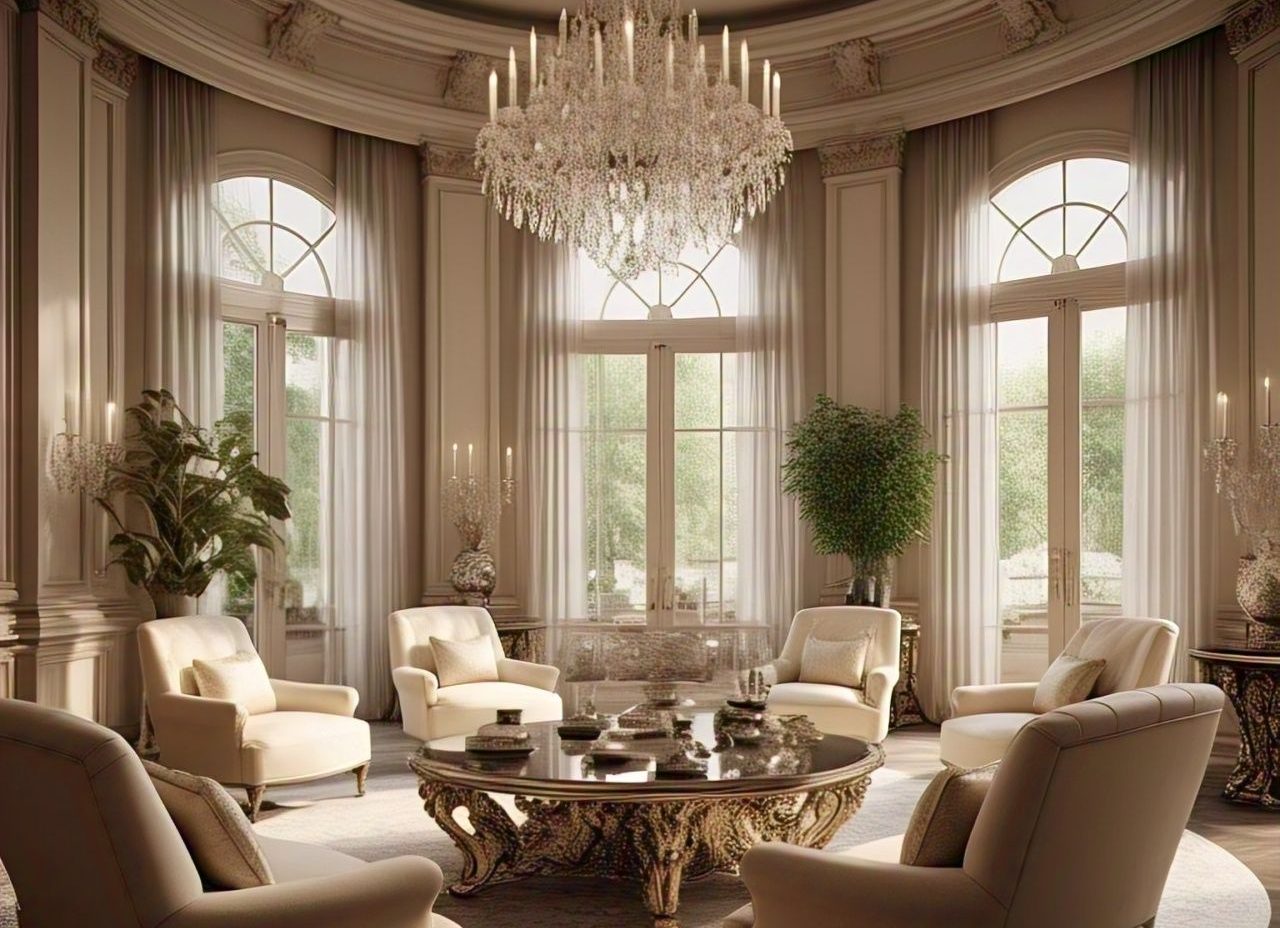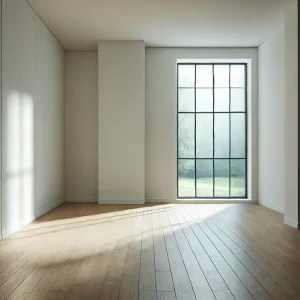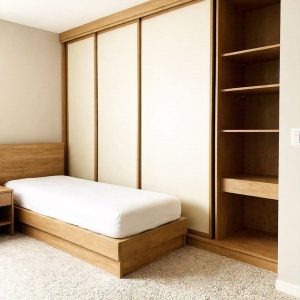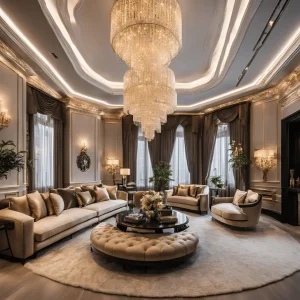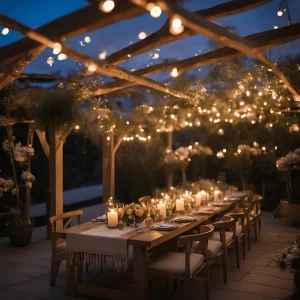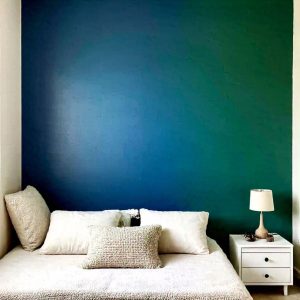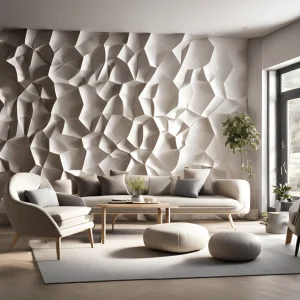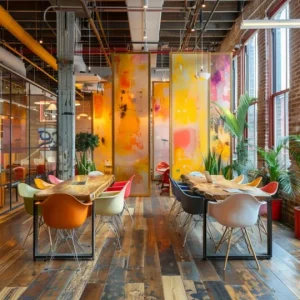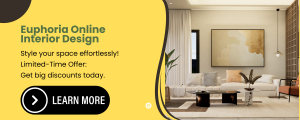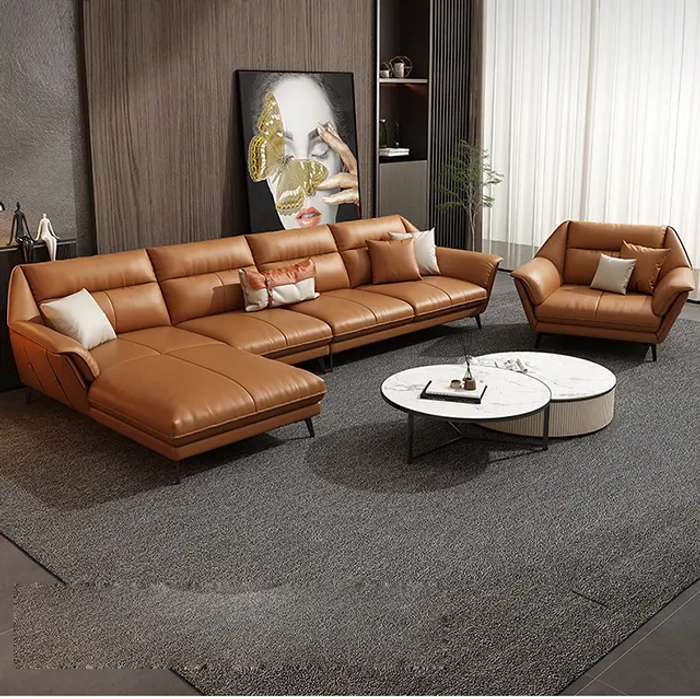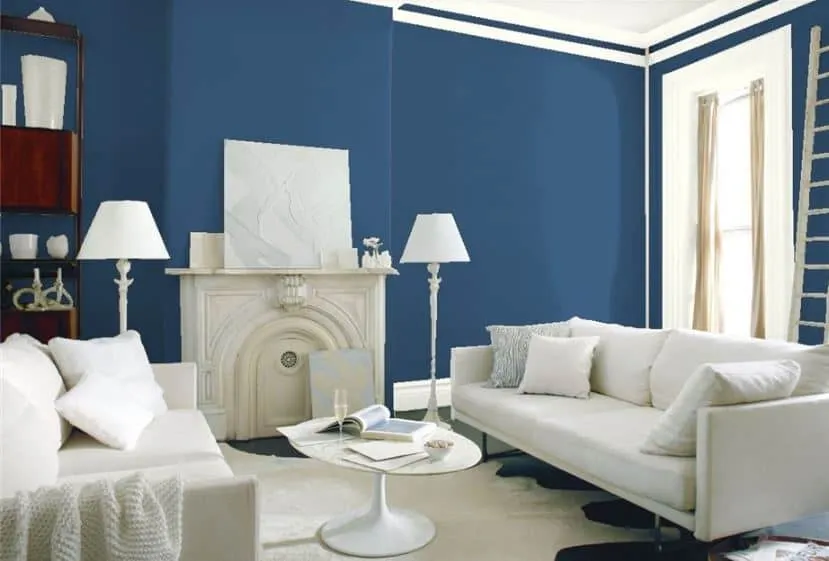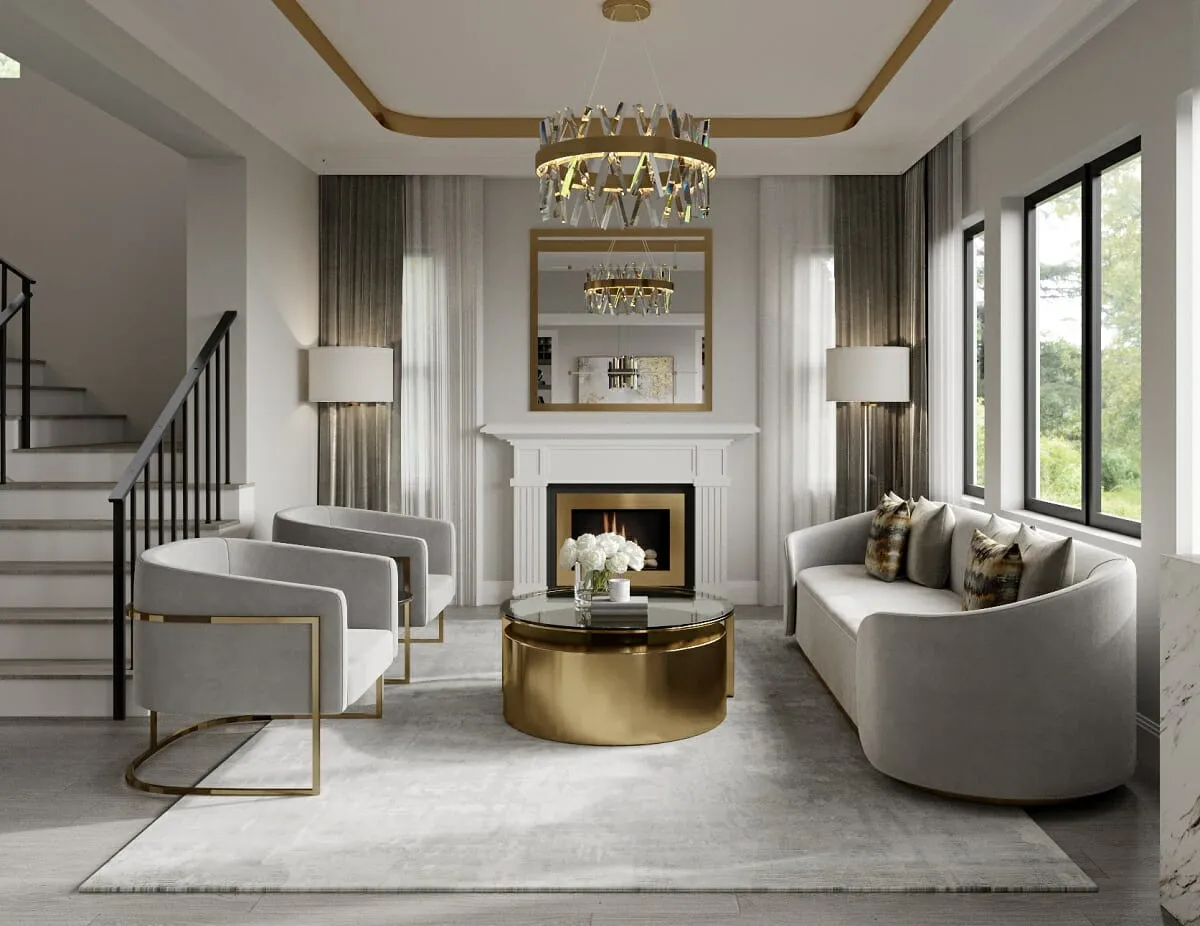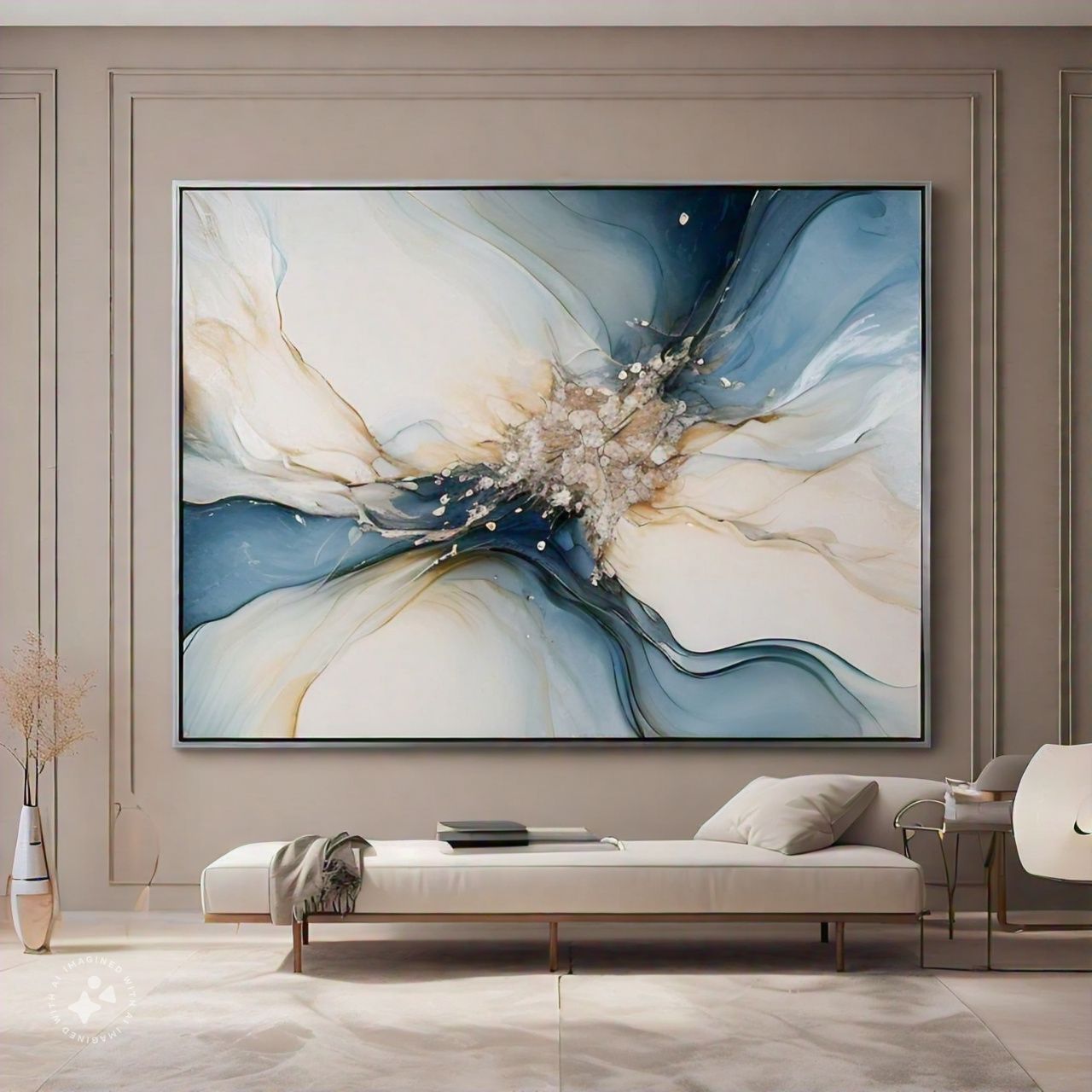Interior design is nothing short of magic. It’s like starting with a blank canvas and filling it with colors that reflect your personality. However, interior design is more than just making a room look pretty or choosing matching furniture and colors. It’s about creating a space that resonates with your vibe and fosters meaningful memories. But, let’s be honest, achieving this seamlessly can be a challenge.
That’s where the 7 essential elements of interior design come in – along with some valuable tips to help you bring it all together.
Understanding the 7 Elements of Interior Design
Space
So first most important and powerful element in interior design is space. Well, there is no such thing called positive space or negative space but as an interior designer if you look at a place that is filled and has furniture, decoration, and objects is considered to be a positive space and empty space is a negative space. Finding a balance between both of these spaces builds up a perfect space.
Here are a few points to nail it:
-
Don’t overcrowd: Leave some open spaces between furniture and decor to let the room “breathe.”
-
Use negative space wisely: Give your eyes somewhere to rest by allowing walls and corners to be free from excessive decor.
-
Create flow: Arrange furniture so there’s plenty of room to move around without feeling cluttered.
-
Highlight your focal points: Negative space helps draw attention to your room’s star features, like a beautiful piece of art or a stylish sofa.
Line:
The second most powerful element of interior design is line. Yes, you read it right line! A simple line can make it or break It it’s a kind of invisible thread that guides the flow of space, a horizontal line like a long sofa or a white shelf can make a room feel calm and expansive, on the other hand, vertical lines like tall bookshelves or windows give your space a sense of height like that balancing between your space and lthe ine can give a depth to your room.
See how different lines can make a single room look differently:
-
Horizontal lines: Create calm, widen spaces, and add stability.
-
Vertical lines: Make rooms feel taller and draw the eye upward.
-
Dynamic lines: Inject energy, movement, and excitement into the design.
-
The balance: Mixing these lines thoughtfully will help guide the eye and bring balance to your space.
Form:
The third element of interior design is form, the simple word if we say a shape or a structure of a room that give it personality for example there are few rooms having soft edges and few have sharp edges some have lowing curves dancing around or a bit of slant every room has its own identity, choosing of room with right form can uplift your entire living.
See here how:
-
Geometric forms like squares, rectangles, and circles bring a modern, sleek feel to a room. You might see these in minimalist furniture or structured decor pieces like coffee tables or art frames.
-
Organic forms, on the other hand, are more natural and flowing. Curved furniture, wavy patterns on a rug, or plant shapes bring softness and a sense of calm to your space.
Light:
The next element of interior design is light, light just not brightens your room but is also bright in certain moods so it is very important to select the correct light for your interior design when a professional interior designer knows how to mix it well but if you are doing it by your own then here are you tips to get it right:
-
Embrace natural light: Use sheer curtains or blinds that allow sunlight to flood in, making rooms feel bigger and more inviting.
-
Layer your lighting: Combine ambient, task, and accent lighting to create depth and flexibility.
-
Use statement fixtures: A bold light fixture can be both functional and a stunning focal point.
-
Consider dimmers: Adjustable lighting lets you control the mood—from bright and energizing to soft and relaxing.
-
Light up dark corners: Don’t forget to add light to underused spaces; it can make a room feel more balanced and open.
Color:
Colour is everything in interior design have you ever felt like some rooms make you feel so positive on the other hand few rooms just suck your soul, colors are equal important in interior design as the calculation is important in maths so here are a few type of colors that can go with different styles:
-
Warm Colors (reds, oranges, yellows) are energizing and create a cozy, welcoming vibe—perfect for social spaces like the living room or dining area.
-
Cool Colors (blues, greens, purples) have a calming effect and are great for bedrooms or bathrooms where you want to unwind.
-
Neutrals (whites, grays, beiges) are timeless and versatile, providing balance and a backdrop that lets other colors pop.
-
Complementary Colors are opposite each other on the color wheel (like blue and orange), creating contrast and making the space visually exciting.
-
Analogous Colors sit next to each other on the wheel (like blue, blue-green, and green), which creates harmony and a soothing, unified feel.
Texture:
The next element of interior design is texture those texture beautiful walls that you always touch or aur a soft curtain that you feel on your face when Breeze comes in all matter of texture playing with different textures can give your room attacked essence of intelligence and give each element its own identity. Here are a few ways to add texture to your room:
Why texture is a game changer:
-
Adds visual and tactile variety to keep things exciting.
-
Breaks up monotony and creates a sense of balance.
-
Elevates a space from flat to full of life and personality.
-
Makes a room feel warmer, more inviting, and comfortable.
-
Helps tie together different design elements, adding richness and depth.
Patterns:
Last but not least is pattern, pattern is a pinch of salt in interior design, we don’t understand its importance until it’s missing in food. Same for patterns some bold geometric rugs and a floral pillow tribe accent wall or a pattern based beautiful painting can give kick of charm to your simple flat space.
Here are few ways to achieve it:
-
Mix big and small patterns: Pairing a large, bold pattern with something subtle can make both stand out without overwhelming the room.
-
Stick to a color scheme: Keep the palette consistent across patterns to tie everything together smoothly.
-
Use patterns to highlight focal points: A patterned piece of artwork or a patterned chair can draw attention to a specific area of the room.
-
Match textures with patterns: Think about combining a soft, patterned fabric with a sleek, solid surface to create contrast and keep things interesting.
The Golden Rules of Interior Design
The Rule of Thirds is one of those simple yet powerful tricks that can totally elevate your space! It’s all about creating balance and flow by dividing your room (or wall) into three equal sections, both horizontally and vertically. Imagine an invisible grid, now, instead of centering everything, you place key elements along these lines or at their intersections. This technique works wonders for everything from furniture placement to hanging artwork. It helps avoid that “perfectly symmetrical but a little too stiff” look, making the space feel more dynamic and visually interesting!
Here’s how to use it:
-
Furniture: Rather than shoving everything against the walls or centering it in the middle of the room, arrange your furniture to create a balanced, natural flow. Think about placing a sofa along one of the horizontal lines or using a key piece to anchor a section of the room.
-
Wall Art: For your artwork, don’t just plop a picture in the center. Use the rule to hang pieces off-center, either aligning them with the grid or placing them at one of the intersections for a more engaging look.
-
Decor: Even with smaller items like lamps, plants, or side tables, you can use the rule to avoid overcrowding and make the design feel effortless yet balanced.
Focal points are like the star of the show in your space—every room needs one! Whether it’s a stunning piece of artwork, a cozy fireplace, or a statement piece of furniture, a focal point gives the room direction and personality. It draws the eye and instantly creates a sense of balance, making the space feel more inviting and intentional. Here’s how you can make the most of focal points:
-
Fireplace: The classic focal point—nothing says cozy like a beautiful fireplace.
-
Artwork: A bold painting or a gallery wall can bring character and color to any room.
-
Statement Furniture: Think bold, oversized pieces that make a statement, like a unique sofa or an eye-catching coffee table.
-
Accent Wall: A contrasting color or texture on one wall can add drama and focus without being overwhelming.
-
Lighting: A stunning chandelier or pendant light can work as both functional and stylish art.
Balance and symmetry are like the secret ingredients to a well-designed space—they create harmony and make everything feel just right. It’s all about finding that sweet spot where the room feels balanced and comfortable to be in. Symmetry is when everything is evenly distributed on either side, like matching lamps on both sides of a sofa or identical armchairs facing each other. It’s perfect for creating a classic, formal vibe. But don’t sleep on asymmetry! Asymmetrical design is about mixing things up—placing different-sized objects or varying heights for a more dynamic, relaxed feel. It’s great for a laid-back, modern look. Both can work wonders, depending on the mood you want to set!
-
Symmetry: Perfect for a polished, orderly look. Think matching furniture, equal proportions, and a calm, structured feel.
-
Asymmetry: Adds energy and excitement. Varying shapes, sizes, and colors create a more casual, creative atmosphere.
-
Mix them up: Combine both! Symmetry in one part of the room, asymmetry in another—this creates visual interest and balance at the same time.
Proportion and scale are like the unsung heroes of interior design—they might not grab attention, but they totally make or break the vibe of a room! It’s all about matching the size of your furniture to the dimensions of your space. Too big, and your room can feel cramped and overwhelmed; too small, and it’ll look like the furniture is lost in a sea of empty space. Getting this balance just right makes a huge difference in how your space flows and feels.
Here’s how to nail it:
-
Scale up for bigger rooms: Don’t be afraid to go for larger pieces in a spacious room—big sofas, bold statement chairs, and even oversized art can create that wow factor.
-
Keep it cozy in smaller spaces: In tiny rooms, opt for more compact furniture that doesn’t crowd the space. Think multifunctional pieces that pack a punch without overwhelming the room.
-
Play with height: Varying the height of your furniture (like mixing low-profile sofas with tall shelves) can help balance the room and create visual interest.
Layering and depth are where the magic happens in interior design! It’s all about creating a space that feels rich, dynamic, and full of life. By combining different textures, colors, and patterns, you add visual interest and make a room feel more inviting and cozy. It’s like dressing your space in layers—you’ve got your base, then you build on it with accents that bring personality and warmth. Think of it like mixing a soft velvet throw with a sleek leather chair, or pairing bold prints with subtle neutrals. The more layers, the more depth, and the more wow factor your space will have!
-
Textures: Mix soft with hard—velvet cushions, wood furniture, and sleek metal accents create balance.
-
Colors: Play with complementary colors or go bold with contrasting tones to keep things exciting.
-
Patterns: Don’t be afraid to mix patterns! Stripes, florals, and geometric shapes all work together when layered thoughtfully.
-
Contrast: Use light and dark tones to add dimension and keep the eye moving around the room.
Personalization is where the magic happens! It’s all about making your space yours—filling it with pieces that tell your story and reflect your personality. Whether it’s a vintage lamp you scored on a weekend market trip, a bold piece of art that sparks joy, or a cozy throw blanket that makes you smile, these little touches make all the difference. When you personalize a room, you create a space that feels truly unique to you. Here are a few fun ideas to infuse personality into your design:
-
Display your memories: Frame your favorite photos or hang souvenirs from travels.
-
Mix & match: Combine different textures, patterns, and colors that feel true to your style.
-
Use meaningful decor: Choose items that hold sentimental value, like heirlooms or gifts from loved ones.
-
Incorporate hobbies: Show off your passions with art, books, or music collections.
-
Add personal touches: A custom rug, a piece of jewelry as decor, or even a DIY project adds a personal flair.
How the Elements and Rules Work Together
When the 7 elements of interior design and the golden rules come together, it’s like a symphony of style and function! Imagine transforming a living room where the furniture flows perfectly with the space, balanced with the right lighting and color. Or, picture a cozy bedroom where every element—from the soft textures to the pops of color—creates a welcoming, restful retreat. These principles work together to create spaces that are not only beautiful but also livable. For beginners, start simple: pick one element to focus on at a time, like choosing a color palette, and build from there. You’ll soon see how they all start to connect!
Common Mistakes to Avoid:
-
Overcrowding a space: Less is often more! Don’t cramp your style with too much furniture or decor.
-
Ignoring lighting or underestimating its importance: Lighting isn’t just functional; it’s mood-setting. Make sure you’re using the right light for every occasion.
-
Choosing mismatched proportions: Scale matters! Keep furniture and decor in proportion to the size of the room.
Conclusion:
Now that you’ve mastered the 7 elements and golden rules, it’s time to get creative! Start experimenting, make it your own, and watch your space transform into a true reflection of your style. Trust me, you’ll love the results! And if you ever need guidance, whether it’s expert advice or finding the nearest interior design company to bring your vision to life, I’d love to help. Let’s make your dream space a reality!
Frequently Asked Questions:
Q1: What sets Euphoria Interiors apart as an interior designer in Dubai?
A: Euphoria Interiors sets itself apart with a seamless fusion of creativity, functionality, and meticulous attention to detail. Our team of specialists is committed to transforming your vision into reality.
Q2: Can you customise interior design packages for residential projects in Dubai?
A: Absolutely! Our residential interior design services in Dubai are tailored to meet each client’s unique requirements and preferences. We believe in creating homes that reflect your individuality.
Q3:Do you offer interior design services for cafes and restaurants in Dubai?
A: Our expertise extends to Café and Restaurant Interior Design in Dubai. We understand the importance of ambience in the hospitality industry and strive to create spaces that leave a lasting impression.
Q4: What makes Euphoria Interiors a top choice for hotel interior design in Abu Dhabi, UAE?
A: Our commitment to delivering exceptional results and a keen understanding of the hospitality sector make us the preferred choice for hotel interior design in Abu Dhabi and across the UAE.
Q5: Can Euphoria Interiors handle large-scale commercial interior design projects in the UAE?
A: Certainly! We specialise in commercial interior design in the UAE, offering comprehensive solutions for offices, retail spaces, and more. Our skilled team is well-prepared to manage projects of any scale and complexity.
